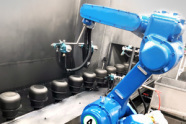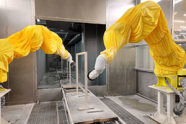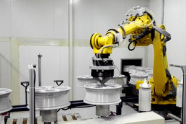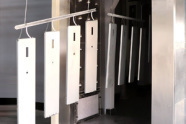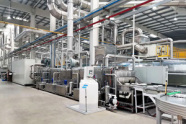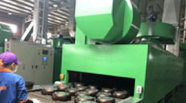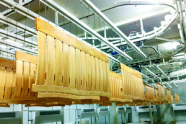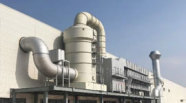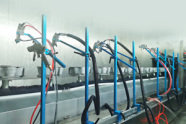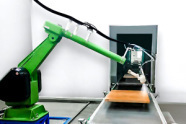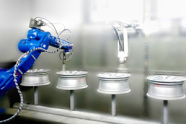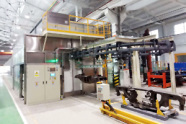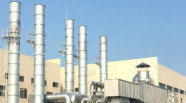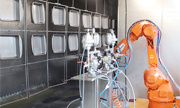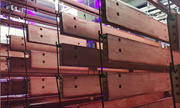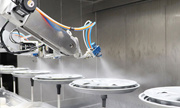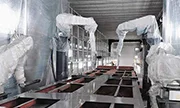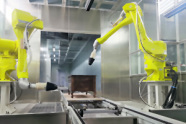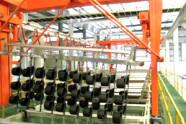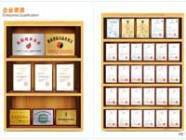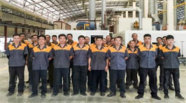All categories
Related News
14
2025
-
08
What to Do About Orange Peel, Particles, and Pinholes on Sprayed Surfaces?
Author:
Chuangzhi Coating
In coating production, the quality of the sprayed surface directly affects the appearance and performance of the product. Orange peel, particles, and pinholes, as common coating defects, not only affect the product's appearance but also may reduce the protective performance of the coating and increase rework costs. As a professional manufacturer of coating line equipment, we combine years of practical experience to deeply analyze the causes of these defects and provide targeted solutions to help enterprises avoid problems at the source and improve production efficiency.
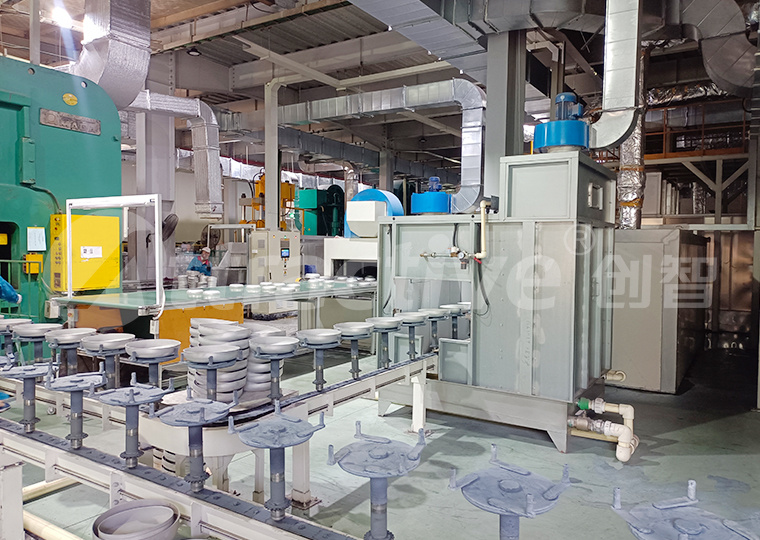
Orange Peel Phenomenon: Starting from Process Parameters and Material Matching
Orange peel refers to the orange peel-like uneven texture on the coating surface, mainly caused by poor leveling of the coating.
The causes can be attributed to three points: first, the mismatch between spraying pressure and atomization effect. When the pressure is too high (exceeding 0.6MPa), the paint atomization is too fine, the solvent volatilizes too quickly, and the coating has no time to level; second, the abnormal viscosity of the paint. When the viscosity is too high, the paint has poor fluidity and is easy to form a rough surface; third, the unreasonable curing temperature. Too fast heating causes the coating surface to cure in advance, and the internal paint cannot supplement the leveling.
The solution needs to be adjusted in multiple dimensions: first, optimize the spraying parameters, stabilize the spray gun pressure at 0.3-0.5MPa, and adjust the atomizing air volume according to the type of paint (for example, solvent-based paints can have a slightly larger atomizing air volume, while powder coatings need to be reduced); second, control the paint viscosity, add thinner in proportion, keep the viscosity at 20-40s, to ensure sufficient leveling time after spraying; finally, improve the curing curve, adopt the "step heating" mode (such as first keeping at 80℃ for 5 minutes, then raising to 180℃), allowing the coating to gradually level before complete curing.
For automatic coating lines, the effect can be improved by adding a flash off room (temperature 25-30℃, stay 3-5 minutes). After a home appliance enterprise adopted this scheme, the orange peel defect rate of refrigerator panels decreased from 12% to 1.5%.
Particle Problems: Strictly Controlling Environmental and Material Cleanliness
Particles are small solid impurities attached to the coating surface, and their causes involve multiple links of materials, environment, and equipment.
In terms of materials, if the paint is not filtered or the filtration precision is insufficient (the filter mesh is less than 200 meshes), it is easy to bring in impurities; agglomerated particles formed by uneven dispersion of pigments can also cause defects. Environmental factors cannot be ignored. If the cleanliness of the spraying workshop is insufficient (the concentration of dust particles exceeds 100,000 class), dust falling on the uncured coating surface will form particles. On the equipment, the paint residue in the spray gun and pipeline falls off, or the compressed air contains oil and water (dew point higher than -40℃), which will also cause particle problems.
Solutions need to be checked at all levels: the paint should be filtered through three stages (coarse filtration 100 mesh → medium filtration 200 mesh → fine filtration 300 mesh) during storage, and the sediment at the bottom of the paint storage tank should be cleaned regularly; the spraying workshop is upgraded to a class 10,000 clean room, equipped with high-efficiency filters (HEPA), an air shower at the entrance, and operators wear anti-static clothing; in terms of equipment, clean the spray gun and pipeline daily, and install a precision filter (oil and water removal precision 0.01μm) in the compressed air pipeline to ensure clean air source.
For powder coating lines, it is necessary to check the integrity of the filter element of the recovery system to avoid impurity mixing caused by damage. A cookware enterprise reduced the particle defect rate of powder coatings by 80% through the above rectification.
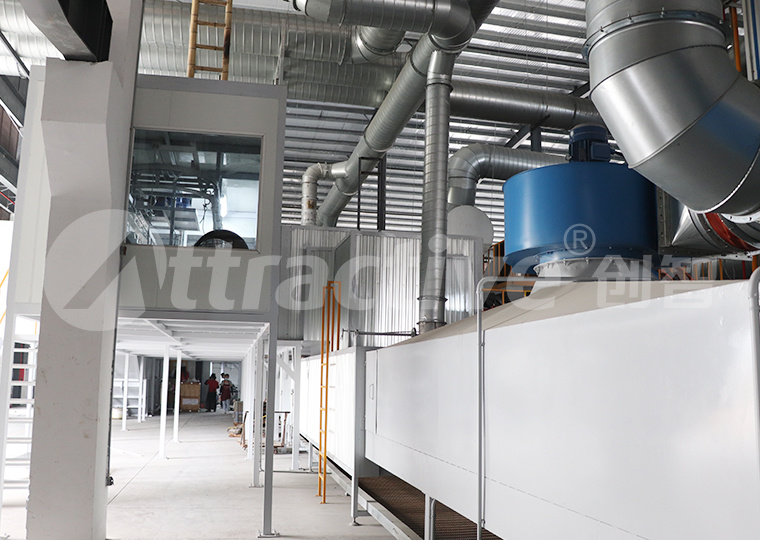
Pinholes: Eliminating Surface Tension Differences and Contamination
Pinholes are circular depressions on the coating surface, and the core reason is the imbalance of local surface tension.
Common incentives include: oil stains and silicon-containing substances remaining on the workpiece surface (such as release agents, fingerprints), which reduce the local surface tension and prevent the paint from spreading; incompatible substances mixed in the paint (such as mixing different types of thinners), causing sudden changes in surface tension; excessive humidity in the spraying environment (relative humidity > 85%), water vapor condenses on the workpiece surface, forming pinholes.
The key to solving the problem lies in pretreatment and material control: strengthen workpiece degreasing, use ultrasonic cleaning (power 500W, time 10 minutes) with a special degreaser to ensure that the surface oil residue is < 5mg/m²; prohibit the use of silicon-containing release agents and lubricants in the spraying area, and operators must wash their hands with silicon-free cleaning agents before contacting the workpiece; control the workshop humidity at 60%-70%, and in low-temperature and high-humidity environments, dehumidifiers can be turned on or the workpiece can be preheated (40-50℃).
When mixing paint, strictly follow the formula and avoid adding thinners at will. A certain auto parts factory had frequent pinholes due to mixing two thinners. After replacing with a unified thinner and optimizing the pretreatment, the defect rate dropped from 20% to 0.5%.
Systematic Prevention: Building a Full-Process Quality Control System
Solving a single type of defect is often a temporary solution. It is necessary to establish full-process control from pretreatment to curing:
- Pretreatment stage: Use automatic testing equipment (such as conductivity meter, film thickness meter) to monitor the cleaning effect, and control the phosphating film thickness at 2-5μm.
- Spraying stage: Real-time monitor the coating thickness through an online film thickness meter (deviation ≤ ±3μm), and regularly calibrate the spraying path of the robotic arm (accuracy ±0.1mm).
- Curing stage: Install an oven temperature tracker to record the actual heating curve of each workpiece to ensure it is consistent with the process requirements.
At the same time, regularly train operators to standardize processes such as color change cleaning and equipment inspection. The intelligent coating line we customized for customers can automatically identify defects and issue early warnings through the AI vision system, controlling the defect rate below 0.3%.
Conclusion
To solve the problems of orange peel, particles, and pinholes on the sprayed surface, comprehensive measures need to be taken from material properties, equipment parameters, and environmental control. Rather than reworking afterwards, it is better to prevent in advance through precise process design and equipment configuration. As a manufacturer of coating line equipment, we not only provide hardware support but also can customize a complete set of solutions based on the characteristics of enterprise products, helping enterprises achieve "one-time spraying qualification", reduce costs and improve product competitiveness.
Previous

